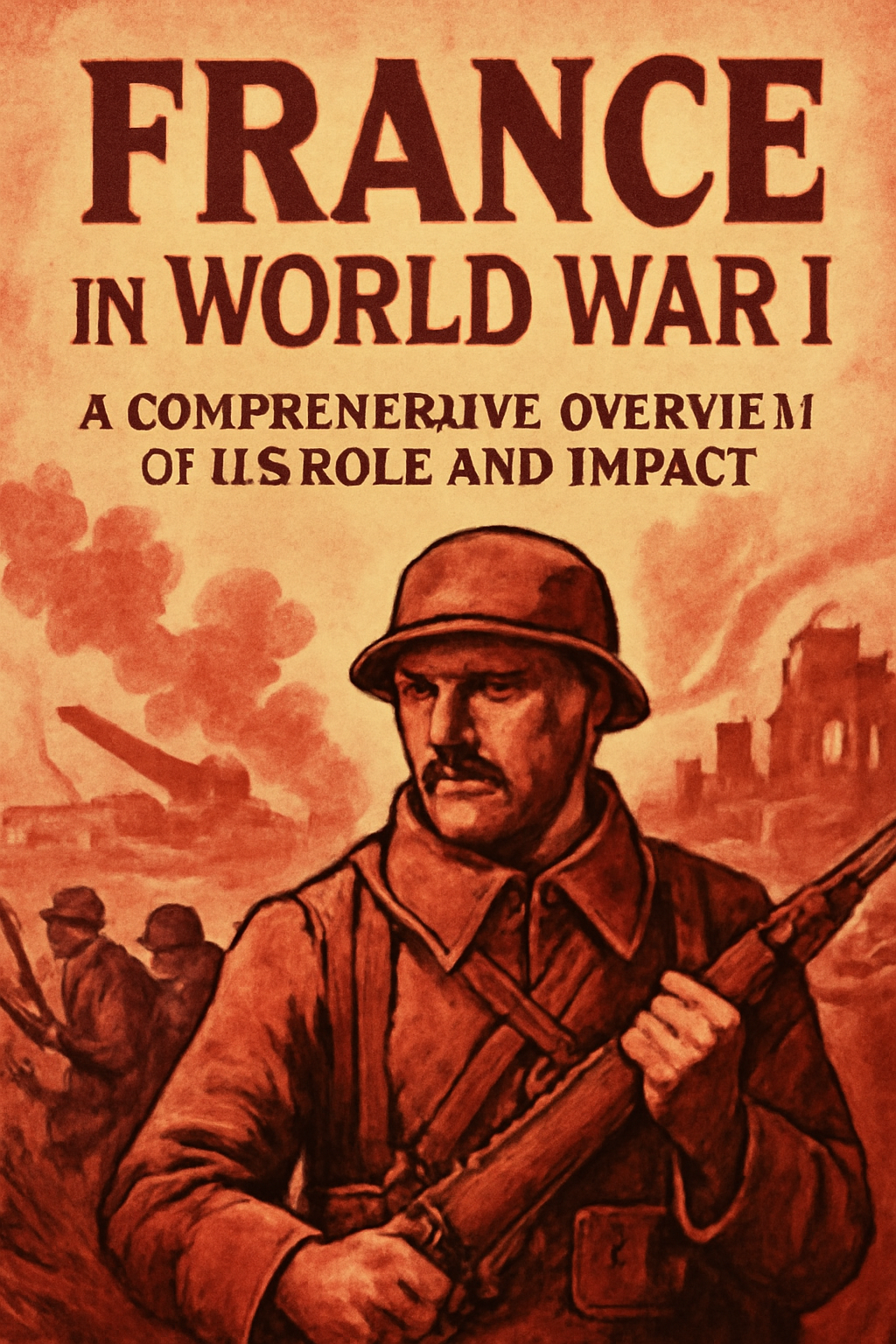
France in World War I: A Comprehensive Overview of Its Role and Impact"
Published on May 23, 2025
France in World War I: A Comprehensive Look at French History in the Great War
Introduction
World War I was a turning point in global history, and France stood at the epicenter of much of the conflict. Known for its tragic yet heroic involvement, France bore the brunt of the Western Front's devastation and emerged deeply transformed. Understanding France’s role in WWI is essential to grasp the broader narrative of the war.
Why Did France Enter WWI?
The outbreak of WWI in 1914 saw France mobilizing rapidly. The reasons were rooted in both recent and longstanding geopolitical tensions:
- Alliance Obligations: France was a key member of the Triple Entente, alongside Russia and Britain. When Austria-Hungary declared war on Serbia and Germany supported Austria, France was drawn into the conflict through its alliance commitments.
- Historic Rivalry with Germany: The defeat in the Franco-Prussian War (1870–71) and the loss of Alsace-Lorraine to Germany had left France eager for redemption and cautious of German military ambitions.
- German Mobilization and Invasion: When Germany declared war on France and invaded through Belgium, France responded with full military mobilization, signaling its unwavering commitment to defend its territory.
Understanding the Western Front: Definition and Dynamics
The Western Front refers to the line of trenches that stretched from the Belgian coast through northeastern France. This front saw some of the deadliest battles in modern history.
Definition: The Western Front was a battlefield characterized by trench warfare, where opposing armies faced off in fortified lines across devastated terrain. It became a symbol of stalemate, suffering, and endurance.
Battles were long, brutal, and often resulted in minimal territorial gains. Soldiers endured months in mud, under constant threat from artillery, snipers, and disease.
Major Battles on French Soil
1. The Battle of the Marne (1914 & 1918)
The Marne River became famous for two significant battles:
- In 1914, French and British troops halted the initial German advance toward Paris, establishing the static trench lines of the Western Front.
- In 1918, a second battle near the Marne helped seal the Allied victory, marking the start of the German retreat.
2. The Battle of Verdun (1916)
One of the longest and most grueling battles of the war, Verdun saw French forces withstand relentless German attacks for nearly 10 months. "They shall not pass!" became a national rallying cry, symbolizing French resilience.
3. The Battle of the Somme (1916)
Primarily a British offensive, the Somme battle also involved French troops and occurred alongside the Somme River. Despite high casualties, the battle relieved pressure on Verdun and tested new military strategies and technologies.
French Rivers and Their Strategic Role in World War I
Rivers in France played a critical role in the war's logistics, troop movements, and battles. Key rivers include:
- The Marne River: Central to two major battles and vital for the defense of Paris.
- The Somme River: Site of one of the war’s deadliest offensives, the terrain around the river made it a focal point.
- The Aisne River: Another strategically important river that witnessed fierce fighting, particularly during the Nivelle Offensive.
These waterways were not only geographic landmarks but also lifelines for military planning and fortification.
Life on the Western Front
The day-to-day life of French soldiers was harsh and monotonous. They faced:
- Cold, wet trenches filled with mud and rats.
- Limited food supplies and medical care.
- Constant artillery bombardments.
- Psychological strain, later recognized as "shell shock."
Despite these conditions, the French army maintained morale and discipline, contributing significantly to the overall Allied effort.
Impact on French Society and Land
The toll of the war on France was staggering:
- Human Cost: Over 1.3 million French soldiers were killed, with millions more wounded.
- Economic Damage: Industrial regions were destroyed, leading to economic hardship that lasted years after the armistice.
- Geographical Devastation: Northeastern France, especially around Verdun and the Somme, became known as the "Zone Rouge" — areas so badly damaged they were deemed uninhabitable.
Entire villages were wiped off the map, and reconstruction took decades.
Post-War Legacy and Remembrance
France continues to honor its WWI French legacy through numerous memorials, cemeteries, and educational institutions. The war profoundly influenced French politics, military doctrine, and international diplomacy for the rest of the 20th century.
Cultural memory remains strong, with Armistice Day (November 11th) a national holiday. Monuments in cities and small towns across France bear the names of local soldiers who never returned.
Conclusion
France’s role in World War I was defined by sacrifice, endurance, and strategic significance. From the trenches of the Western Front to the rivers that bore witness to bloody confrontations, France was both battlefield and battleground. Understanding this chapter of history allows us to appreciate the resilience of a nation shaped by war.
This overview serves not only as a tribute to those who served but also as a resource for those seeking to understand the complexities of the First World War from a uniquely French perspective.
